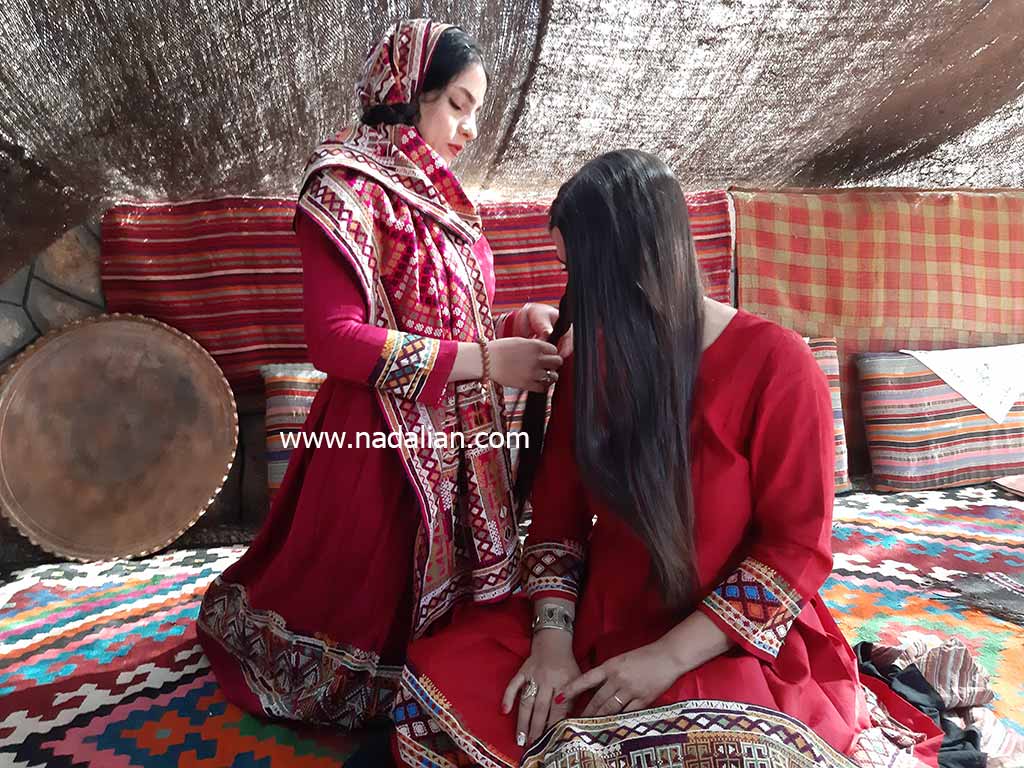Social Context and the Need to Work with Women
Ahmad Nadalian’s activities in Hormuz Island and the villages of Qeshm began at a time when many women faced cultural, economic, and social restrictions. The absence of employment opportunities, limited freedom to appear in public spaces, and the neglect of their traditional skills motivated him to use art as a tool for social transformation.
Nadalian believed that art could turn the silence of marginalized women into expression, and their isolation into active participation. In the territory of the Sangsari nomads, he used dance as a medium to create opportunities for women to appear in public and demonstrate their artistic abilities.
Methods of Empowerment: From Art to Sustainable Tourism
Nadalian designed a wide range of artistic and educational activities that women could join without any initial capital. Reverse glass painting, painting with colored soils, textile design and sewing, creating artworks with recycled materials, and training in sustainable tourism, homestay hospitality, marketing, and sales all became tools for financial independence.
Beyond art-making, he taught professional skills such as pricing, packaging, presenting artworks to tourists, and managing communication. Through this process, women became not only artists but also managers of their own small businesses.
Social Presence and the Restoration of Self-Confidence
Attending classes, participating in activities at the Nadalian Museum, presenting their artworks to tourists, and joining collective cultural events expanded the social presence of women. In some regions, ritual dances, group performances, and environmental activities created opportunities for women to be seen in public for the very first time.
This visibility transformed family and community perceptions of women’s roles, increased self-confidence, restored individual and social identity, and strengthened their sense of participation in local development.
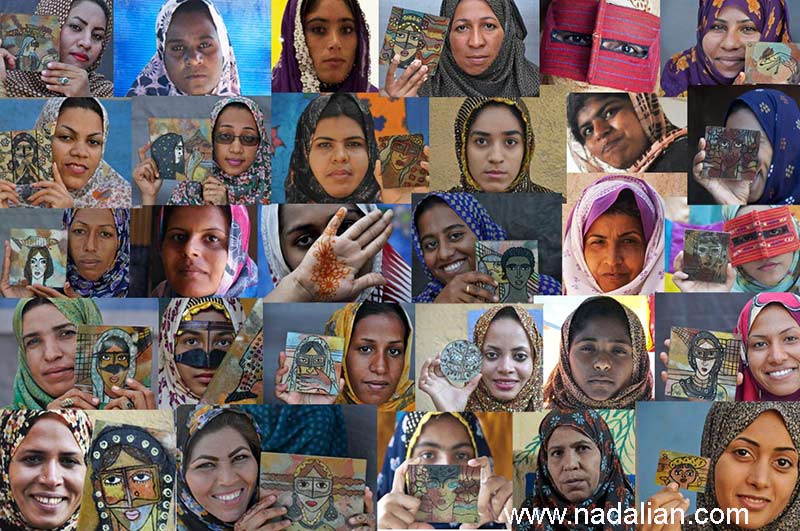
Members of the Women Painters’ Association of Hormuz Island at the Dr. Nadalian Museum.
Reviving Local Culture and Turning Threats into Opportunities
Nadalian consistently emphasized the cultural heritage embodied in women’s textile traditions. He rescued old pants, fabrics, and Golābatun embroidery from being discarded and turning into microplastics, and revived them through reverse glass painting, mixed-media artworks, and museum collections.
Each garment became a document of women’s lived experience. Many women and girls gifted their old or tight-fitting pants to his museum, symbolically contributing to the preservation of their cultural identity. This process created a chain of participation, collective memory, and recognition of women’s cultural value.
Among the Sangsari nomads, repeated performances of ancient dances also renewed interest in traditional needlework and its authentic motifs.
In 2015, Nadalian invented the reverse-glass fabric painting technique and taught it free of charge to many women in Qeshm’s villages. These works are now sold in his museums and galleries.
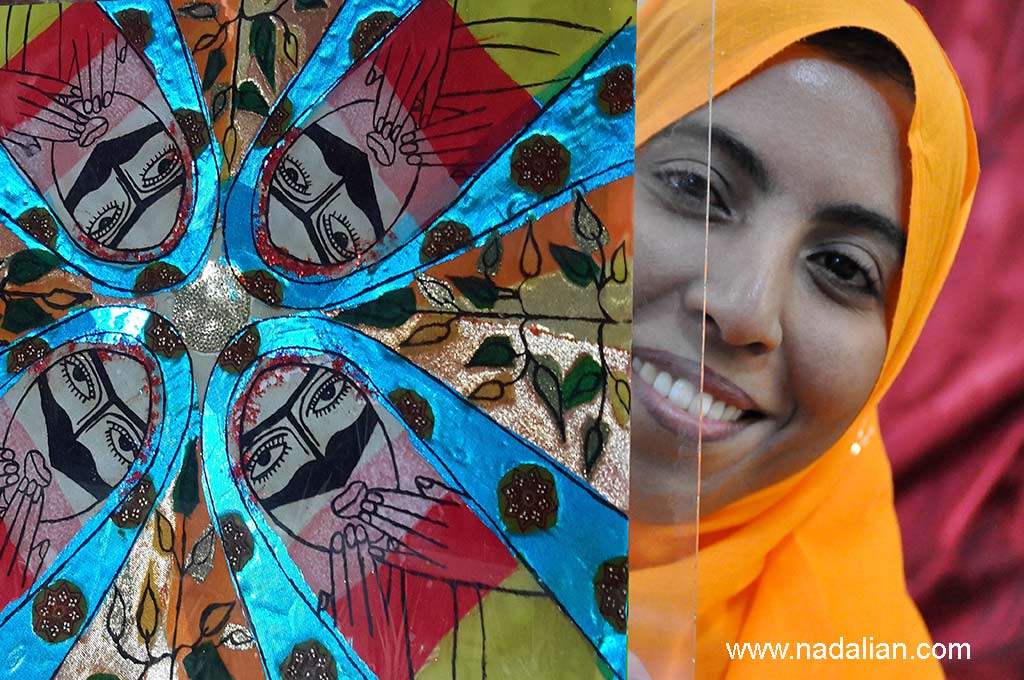
Reverse-glass fabric painting designed by Ahmad Nadalian and executed by the girls of Selakh village, Qeshm.
Linking Women’s Empowerment to the Growth of Feminine Symbols in Nadalian’s Art
The empowerment of women was not merely a social project; it gradually became part of Nadalian’s aesthetic structure and artistic worldview. Through observing women’s lives, struggles, hopes, and strengths, he expanded feminine symbols both mythologically and socially in his artworks.
Mother-and-child figures, earth and color goddesses, women in motion or dance, and faces emerging from burnt fabrics or colored soils—each of these is inspired by real women in the South and among the nomads.
These symbols evoke the ancient archetype of the “Mother Goddess,” yet they also present a renewed image of contemporary Iranian women in both the South and the North—women who, despite challenges, retain their creativity, resilience, vitality, and beauty. They move from the margins into the center of art, and Nadalian’s visual language becomes a “pictorial narrative of women’s empowerment.”

Art as Social Change and the Revival of the Feminine Archetype
By combining art with education, creative economy, and social participation, Nadalian helped transform women into key actors in cultural and tourism development. In this process, he not only changed the lives of women but also expanded his own visual language, reconstructing feminine symbols that weave together tradition and modernity, suffering and beauty, presence and silence. This trajectory demonstrates that art can simultaneously: serve as a tool for genuine empowerment, and provide a fertile ground for the formation of feminine symbols.
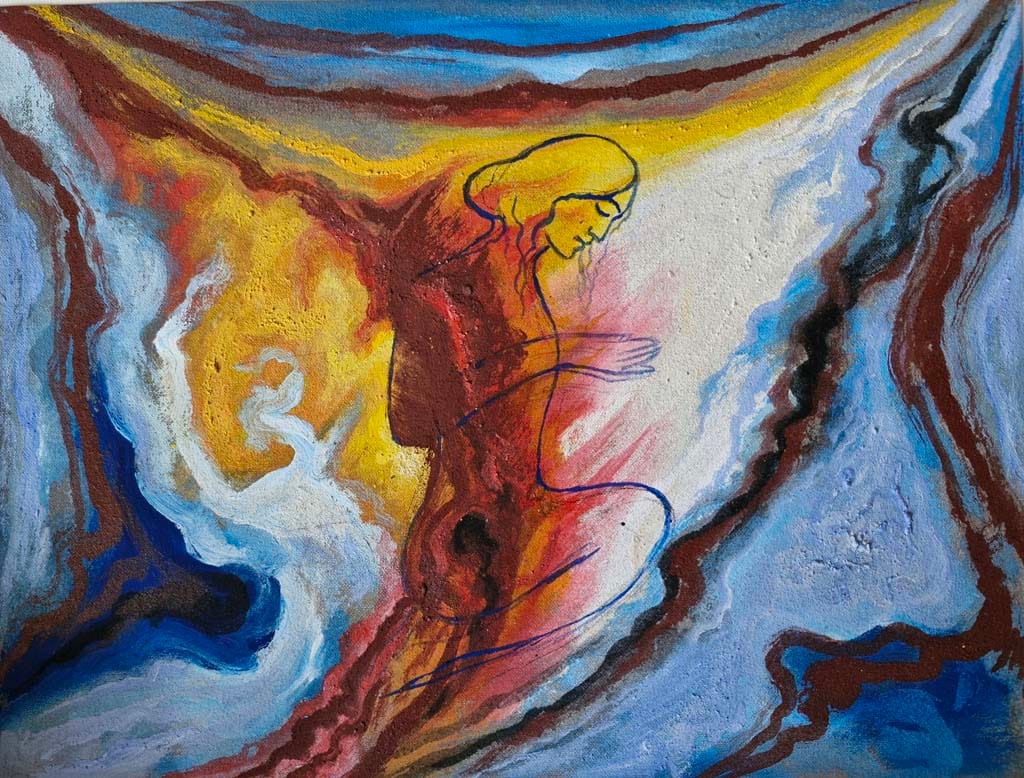
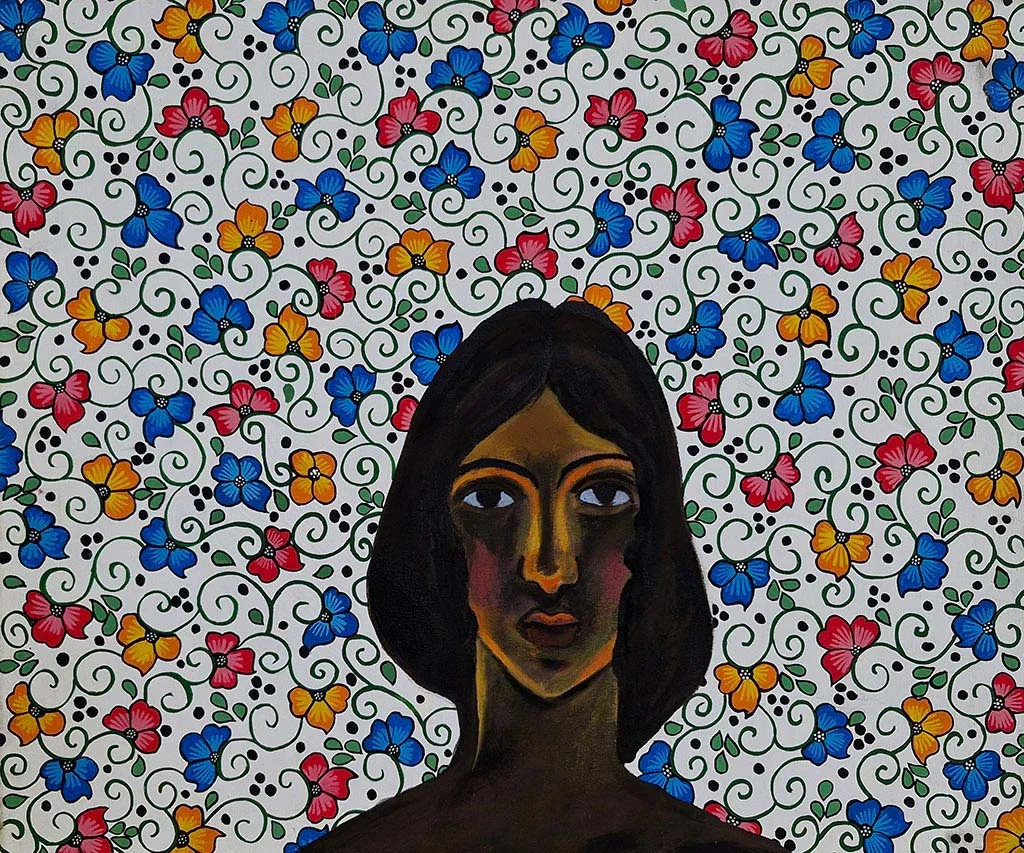
Views: 4

 فارسی
فارسی

